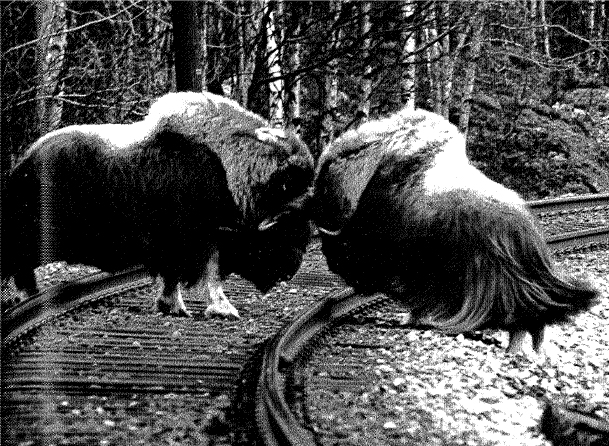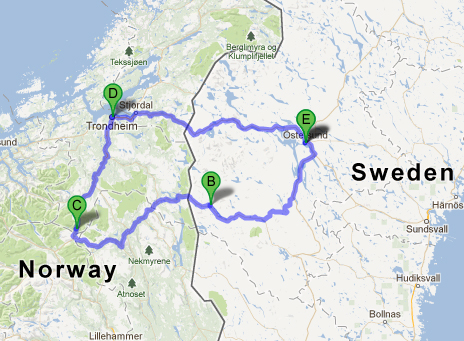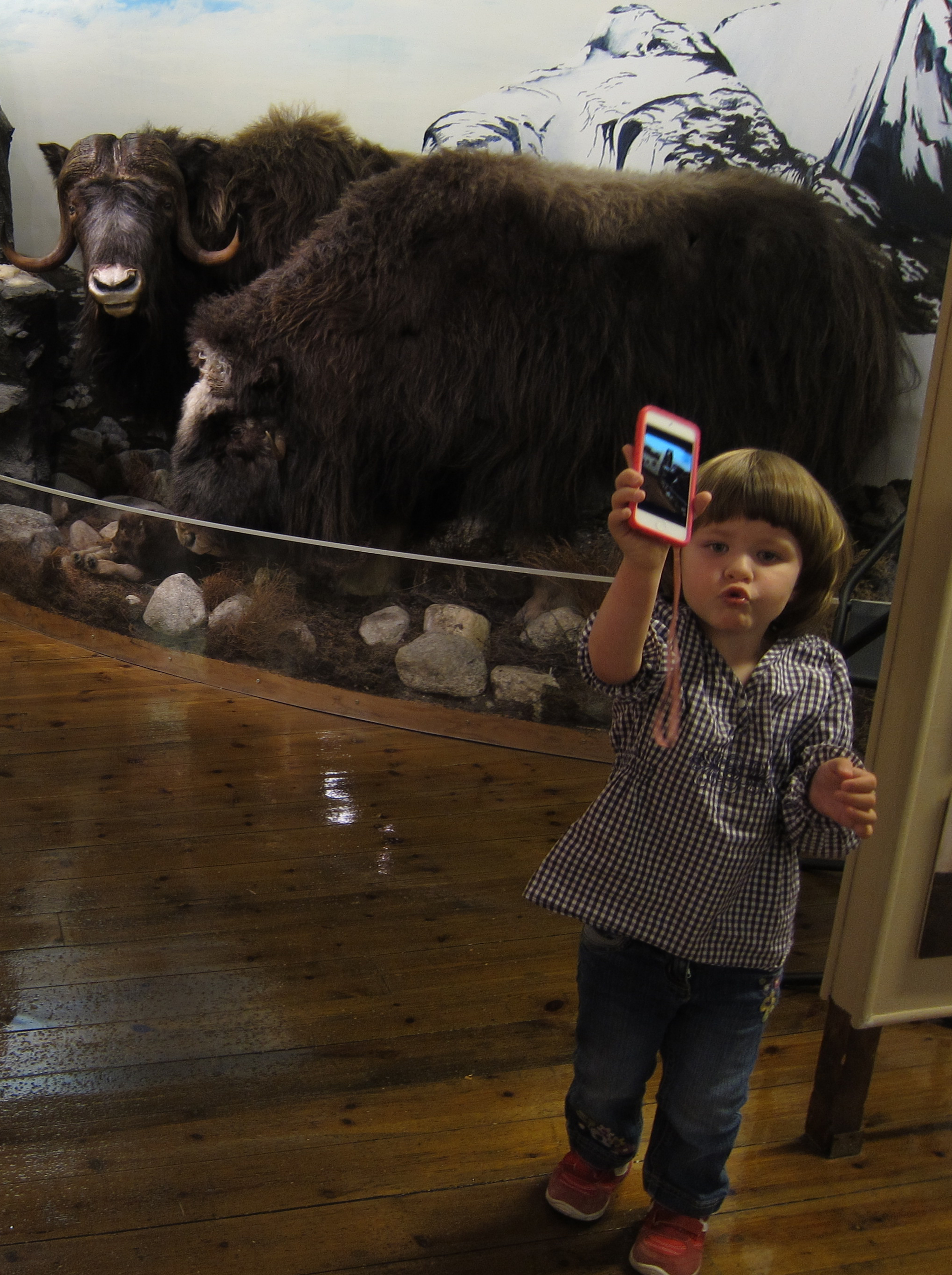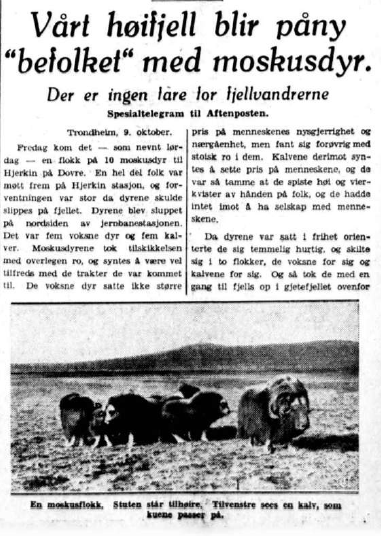
At the end of the tunnel
There is a song by the Norwegian duo Knutsen & Ludvigsen that came to mind as I made my way through newspaper archives today. The folksy upbeat song, Ku i tunnelen, translated to English goes something like: “Look! Here comes a cow in the tunnel / Along with a small dog. / What are those two doing here so late at night? / Why do you think they are together?” And later in the song, “Was it a he-cow or a she-cow? Was it dangerous or not?”
The answer to the last question is easy: a cow in a tunnel is always dangerous. Or at least a muskox in a tunnel is.
In 1967, for the first time in Norway, a muskox was struck and killed by a train. The story made the front page of the Monday, 10 July 1967, morning edition of Aftenposten. A freight train was going early Sunday morning between Drivstua and Kongsvoll right smack in the middle of the Dovre muskox range. A flock of 4 or 5 animals were standing on the tracks just outside of a tunnel opening and the train didn’t have time to stop.
The area was a known home of muskox. The train company spokesman said that the locomotive drivers were aware of the muskox in the area and drove more slowly than usual to avoid collisions. Once before, a muskox was shoved out a tunnel with its horns against the train, but it that case, it lived to walk away.
This was the first deadly case of train versus muskox in Norway, but not the last. A calf was hit in June 1968 in the same exact area and had to be put down because of serious injuries. Another muskox wandered into the area around Reitstøa train station in September 1968 and locomotive engineers had to be warned to keep an eye out for it. In August 1970, a group of 3 muskox were killed at one time by the express train to Trondheim. And the list goes on.
In the 1970 case, the spokesperson for NSB (the Norwegian train agency) said that although muskox had previously been on the tracks, an accident had never happened before. Either he hadn’t read the papers the previous three years, or he meant that the express train hadn’t previously been involved. According to an article in June 1971, nine muskox had been killed be trains in Dovre since 1967.

It would seem that these accidents became ‘normal’, much in line with how Charles Perrow characterised the acceptance of risk in highly complex technological systems. In 2001, Aftenposten had an article about the number of animals killed by trains in 2000. The numbers for the year are pretty staggering: a total of 1,378 animals of which there were 531 moose, 349 reindeer, 234 sheep, 125 roe deer, 4 muskox, and a myriad of other critters. The annual numbers for muskox deaths appear to hover somewhere between 3 and 5.
The ways in which these deaths were talked about the papers is interesting, because although it is the train that hit the animal, it was always the fault of the animal for being on the tracks. It was the animal that was out of place. One newspaper headline from 14 July 1984 attached to an article about a muskox calf that was hit by a train in Drivdalen sums up this attitude: ‘Muskox calf too close to civilization’. Being too close turned out deadly.
I think this is the fundamental problem with the relationship of people and reintroduced animals in the modern age. We like the idea of them, and we like having them there — as long as they don’t get in the way. Train tracks running through the countryside is not understood as a problem because trains are infrastructure incorporated in our livelihoods. The muskox on the other hand are seen as expendable, at least when it is standing at the end of a tunnel.



